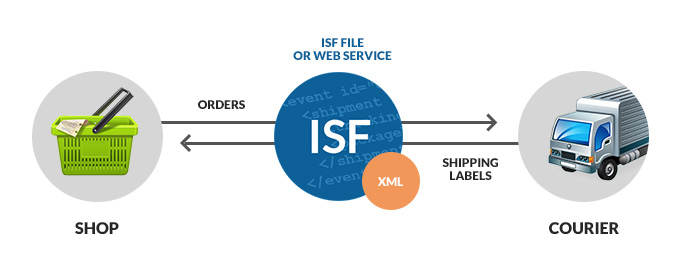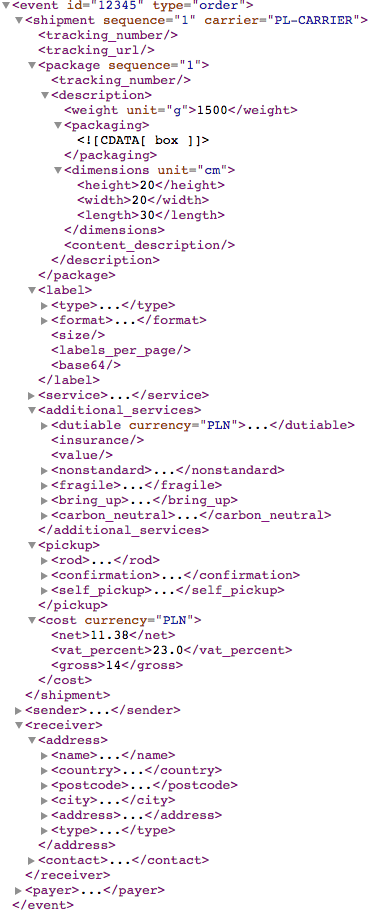What is ISF?
 Internet Shipment Format is an XML based, shipment data exchange standard for communication between online stores and external courier services.
Internet Shipment Format is an XML based, shipment data exchange standard for communication between online stores and external courier services.
ISF allows for manual XML file, or web service based data exchange (orders, returns) with couriers, delivery brokers, shipping and other order fulfillment companies. Thanks to this standard, our shops can be quickly and easily integrated with such external services, further streamlining the order handling process.

ISF advantages
The standard was created in cooperation with partner companies who provide order fulfillment services to online shops, in order to ensure it covers all the elements required to support the most frequently used integration scenarios. Below are some example advantages of using the ISF standard for integrating external services:
- delivery services brokers can integrate directly with online stores and target couriers
- drop shipping wholesalers, order fulfillment companies can automatically process shipping requests
- courier companies can take advantage of a stable and well structured integration environment
- online stores can automate the shipment preparation and document generation processes
If you are a broker, consider implementing the ISF standard
ISF is an open standard, provided under the Creative Commons license which means you are free to utilize it in your own solutions. Implementing ISF support has the following advantages:
- it lets you provide seamless delivery services to over 3500 online stores running on the IdoSell platform
- you are not reinventing the wheel, the format is clear and easily understood
- you are future proofing your solutions, as our integration standards are used all over the ecommerce ecosystem
Pick the right integration method
ISF lets a shop send you order information with the intention of receiving back data about the shipment and shipment labels to be put on parcels. You can support this functionality in one of two ways - by integrating with the ISF web service or accepting XML files generated manually.

ISF web service integration
- Store operators mark orders for delivery in the administration panel and choose the Print / Deliveries and printouts for courier option - the system then connects to the broker's web service and sends ISF data.
- The broker's web service generates the return ISF data containing parcel numbers and shipment labels (in the same connection, synchronously).
- Parcel numbers and labels are automatically imported to respective orders, tracking numbers are also populated. Shop operators can then print the generated labels.
Manual ISF file integration
- Store operators generate the ISF file containing order data, download it and provide it to the broker (e.g. via email or a website upload).
- Broker completes the required information in the file (parcel numbers, shipping labels) and sends back the file.
- The shop operators upload the received file using dedicated administration panel functionality. After the import is complete, parcel numbers and labels are automatically imported to respective orders, tracking numbers are also populated. Shop operators can then print the generated labels.
